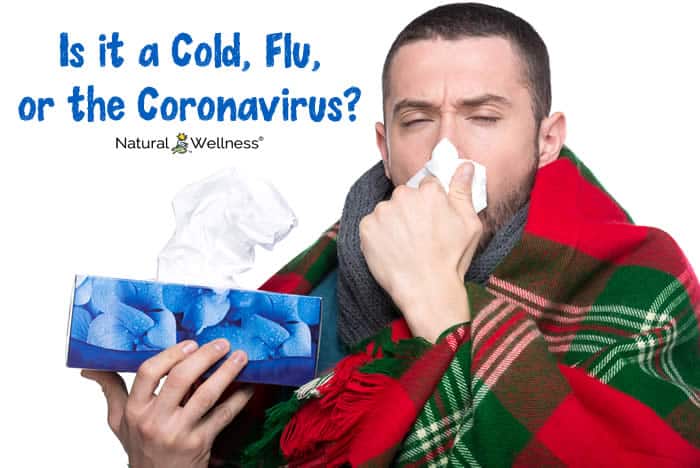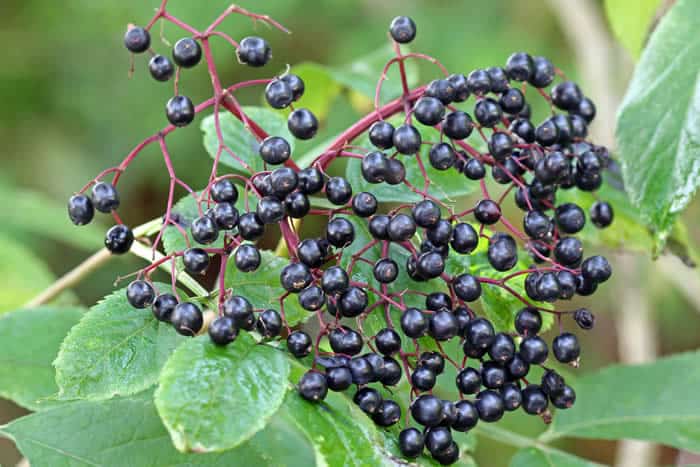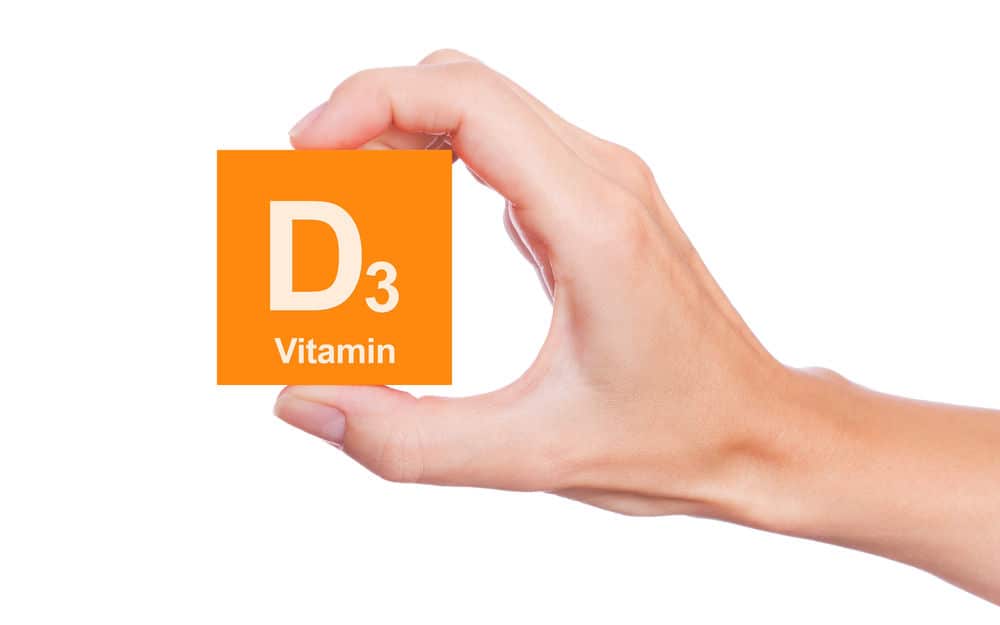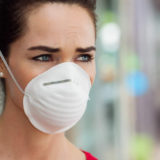

2020 has been a year like no other. The novel coronavirus (COVID-19) took center stage and now any cough or sneeze that happens makes us wonder, “Do we have it?” Although symptoms can vary from person to person, there are often tell-tale signs that differentiate COVID-19 from other common illnesses.
Common Colds
The average American gets 1 to 3 colds each year, resulting in more than 22 million days of missed school and even more absent days from work every year. (1) This infection tends to be mild and can improve on its own without requiring treatment.
The common cold is also often called viral rhinitis and comes from the virus family called rhinovirus. Rhinoviruses cause around 40% of colds and contains about 100 different virus types.
Symptoms
Once this rhinovirus infects you, the first thing you may notice is your throat starting to hurt. Around 50% of people develop a sore throat in as soon as 10 hours after being infected. (1)
From there, other symptoms that may pop up, include:
- Congestion in the nose and sinuses
- Running nose
- Sneezing
- Hoarseness and cough
One thing to note is that fevers are rare when it comes to common colds. A normal body temp usually ranges from 97 to 99 degrees Fahrenheit. If it passes 100.4 degrees, chances are you’re not dealing with the common cold. (2)
Duration
When the seasons change, so does your chance of getting infected by the common cold. Most colds get us in the early fall or spring, but that doesn’t mean you are safe in the summer or winter. People with a cold are most likely to pass it on during the first 24 hours of getting ill, but as long as the symptoms last, they remain infectious. (1)
You can expect the common cold to reach the worst point on either the 2nd, 3rd, or 4th days, and linger around for about a week. About 25% of people may even have symptoms that continue longer, like a cough. (1)
Prevention and Treatment
When it comes to prevention, you need to avoid close contact with anyone who is infected. The virus can be transmitted when germs from the nose, mouth, or cough/sneeze droplets from an infected person reach another. It’s even possible to get the virus by touching a surface that was recently touched by a person with the virus, and then rubbing your eyes or nose. (1)
Some tips to remember, include:
- Washing your hands often
- Avoid rubbing your eyes and nose
- Avoid close and/or prolonged contact with someone who is infected
- Carefully dispose of used tissues
- Get plenty of sleep (at least 7 hours)
- Exercise regularly
When it comes to treatment, there are different therapies you can incorporate in your routine to improve the symptoms of a common cold but not cure it completely.
Some top therapies to try out, include: (1)
- Gargling warm salt water to soothe a sore throat
- Inhaling steam to improve nasal congestion
- Using OTC cold remedies that can help to relieve congestion and/or cough
You can also support your immune system before you get a cold by supplementing with Natural Wellness’s Immune System Support, which contains standardized European echinacea, zinc, vitamin C, as well as other immune supporting vitamins and minerals. One review article from 2017 published in Evidence-Based Complementary and Alternative Medicine (3) found that the combination of these 3 show a positive role when it comes to shortening the duration of common colds and reducing the severity of symptoms.
The review states:
- Vitamin C – 1 to 2 grams per day reduced duration and severity of the common cold by 8% in adults and 14% in children.
- Zinc – Potentially shortens the length of a cold by about 33%.
- Echinacea – A complementary treatment for respiratory tract infections (which the common cold is), and has been shown to enhance the immune response.
Flu
The flu, aka influenza, is a little more serious than the common cold, where it can range from mild to severe and potentially cause death. The CDC (4) did a study that showed around 8% of the U.S. population gets sick from the flu each season.
Symptoms
Unlike the common cold where symptoms can gradually get worse, the flu tends to knock you off your feet right away.
When you’re dealing with the flu you may experience one or all of the following symptoms: (4)
- Fever or feeling feverish/chills
- Cough
- Sore throat
- Runny or stuffy nose
- Muscle or body aches
- Headaches
- Fatigue
- Vomiting and/or diarrhea
It is possible to have the flu and be asymptomatic, meaning you aren’t showing symptoms at all.
Duration
If you’re a healthy individual, the flu will be uncomfortable but also short-term. After around 1 to 4 days after exposure to the virus, symptoms will appear and will likely last around 5 to 7 days. (5) The flu virus is spread the same way the cold virus is, through droplets from a cough or sneeze from a sick person. If you’ve had a flu shot, your symptoms may not last as long or may be less severe.
There are some people who are at greater risk for complication from the flu: (5)
- Very young age
- People 65 or older
- Individuals with chronic illnesses, such as asthma, heart disease, or diabetes
- Pregnant women
- People with a body mass index (BMI) of 40 or higher
Prevention and Treatment
Preventing the flu can be tricky since it is highly contagious, but there are a few steps to take to limit your chances.
They include (5):
- Get a flu vaccine every year
- Wash your hands with soap and water often
- Contact your doctor ASAP when showing symptoms of the flu
- Stop smoking, as smokers have a higher chance of getting the flu
Elderberry is something you may want around during flu season. Studies (6) have shown that it’s effective in treating the flu.

One study found that elderberry extract during an outbreak of influenza B completely resolved symptoms in 46.7% of the group taking the extract. That was compared to only 16.7% who were taking placebos.
Coronavirus (COVID-19)
This newly identified coronavirus 2019 is different from the other forms of coronavirus that have circulated the population. Coronaviruses have been around since the mid-1960s and there are now 7 that can infect people. (7)
Symptoms
The challenging part of COVID-19 is that some individuals don’t show symptoms with the virus, while others deal with more severe symptoms.
Oftentimes the virus causes symptoms, such as: (8)
- Fever
- Body aches
- Dry cough
- Fatigue
- Chills
- Headache
- Sore throat
- Loss of appetite
- Loss of smell and/or taste
Oftentimes, at the time you’re exposed to the virus to the time symptoms start, ranges from 5 to 6 days. There have been studies that show symptoms can start as early as 3 days after exposure to as long as 13 days. This is the reason behind the CDC recommendation of quarantining for 7 to 14 days after being exposed to COVID-19. If or when you do get mild symptoms, they could linger for about a week and worsen rapidly. (8)
Older adults and those who have severe underlying medical conditions such as heart disease, lung disease, or diabetes are at higher risk of developing more serious complications from COVID-19.
If any of the following symptoms occur, seek medical care immediately: (9)
- Trouble breathing
- Persistent pain or pressure in the chest
- New confusion
- Inability to wake or stay awake
- Bluish lips or face
Duration
The duration of COVID-19 still is under investigation, but the CDC (10) states that data shows people with mild to moderate symptoms remain infectious for not longer than 10 days after symptoms arise. Individuals who are dealing with more severe to critical illness could remain infectious for up to 20 days after the onset of symptoms.
If you’ve already had COVID-19, reinfection is not common within 90 days from the initial onset of symptoms. Past 90 days, you could possibly become reinfected. (10)
Prevention and Treatment
The coronavirus has swept the globe, with protective measures being implemented to limit travel, avoiding crowds, and social distancing.
Other ways you can prevent the spread includes: (11)
- Avoid close contact with people who are sick
- Avoid touching your eyes, nose, or mouth
- Stay home if you’re sick and showing symptoms
- Disinfect touched objects or surfaces every day, including countertops, toilets, phones, and keyboards
- Wash your hands often with soap and water
At this time there isn’t a treatment that can cure COVID-19, but a vaccine is in the works. In the meantime, most individuals who get sick from COVID-19 are able to recover at home and are recommended to: (11)
- Get lots of rest
- Stay well hydrated
- Take acetaminophen for any fevers, aches, or pains
Vitamin D supplementation has also gained popularity in the potential of treating and/or preventing COVID-19. A 2020 study published in the Clinical Medicine (12) states that low levels of vitamin D can create an increase in inflammation and increase the risk of respiratory tract infections. Individuals who are obese or have diabetes have a higher chance of being deficient in vitamin D and also more likely to have more severe symptoms of COVID-19.

Although it’s not 100% certain, there is the possibility that vitamin D supplementation could be beneficial against COVID-19. More research needs to be completed. If you’re looking for a quality vitamin D supplement, Natural Wellness’s Vitamin D3 provides 5,000 IU in each serving.
Conclusion
Since a lot of the symptoms for the common cold, flu, and the coronavirus are interchangeable, it can be hard to pinpoint exactly what one you’re dealing with. You may be able to narrow it down though. For example, a fever likely eliminates the fact that it’s just the common cold you’re dealing with. The only thing that’s certain is getting tested to verify whether or not you have the flu or COVID-19.




